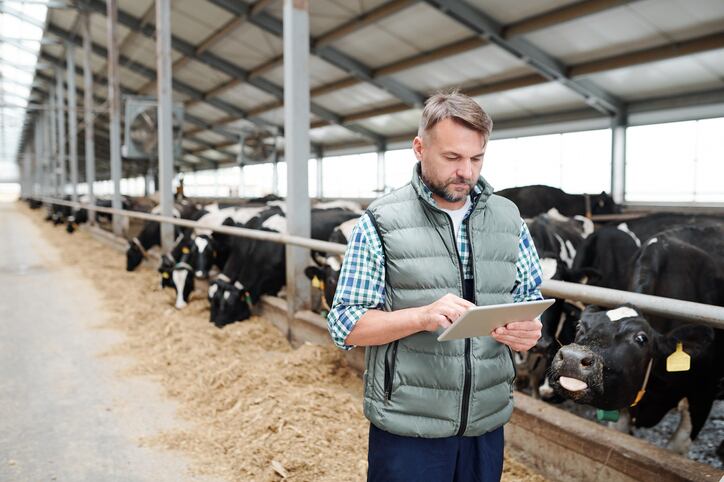Developed as part of its sustainability roadmap, SilvAir targets dairy cow methane production. The product has been shown to cut methane emissions by up to 10%, without a negative impact on performance. It can also reduce the production of C02 equivalent per cow per day by 1kg when included at a rate of 1.6% of the total diet dry matter, said the developer.
Based on its nutritional value, 100g of SilvAir can replace 40g of feed grade urea or 250g of soybean meal in dairy diets. In addition, 100g of the product can also replace 60g of limestone in cow diets, according to Cargill. Diets that include the feed material must be reformulated to ensure correct amounts of crude protein are supplied and excess levels are avoided.
Nitrate model
The product has over a decade of research and 26 scientific publications in peer-reviewed journals behind it, said Sander van Zijderveld, Cargill’s ruminant lead, who has been heading up the development of the product since its inception.
He began evaluating the use of nitrate in ruminant diets some 10 years ago, as part of his PhD project at Provimi, with the idea of lowering enteric methane production. Cargill now holds the global patent on the use of dietary nitrate in that respect, with numerous trials undertaken globally proving the concept.
The product, which is authorized in the EU, comprises 76% nitrate and 22.5% calcium with dry matter content at 84%. It works by mopping up some of the hydrogen produced in the rumen during fermentation of feedstuffs. This hydrogen would otherwise combine with carbon to produce methane.
“What we do is take the hydrogen before it can become methane and we turn it into ammonia, which is a useful component. Microbes get more energy converting nitrate into ammonia than they do making methane,” explained van Zijderveld.
He hypothesized that there would be a boost in terms of milk production resulting from the redirection of that excess energy, but such an outcome was not seen. Therefore, there was no performance gain that could compensate the farmers for use of the product.
Incentive schemes
SilvAir costs about 15-euro cents per cow per day in dietary costs. So, who is going to pay for its incorporation into dairy feeding systems?
A new incentive-based business model is beginning to emerge, said the Cargill representative, with many dairy processors, governments, and supermarkets having committed to being net zero by 2050; Cargill has spent the past two years engaging stakeholders, talking to a range of upstream partners to find ways of ensuring SilvAir will become an integral part of the toolkit used on farms to help dairy producers meet environmental goals.
In Belgium, the feed material is included on the Belgian Feed Association’s list of suggested technologies, reviewed by a scientific committee, to reduce methane emissions, which means it is eligible for a Belgian government subsidy. “Some frontrunner dairy farms there are now using SilvAir.”
In the Netherlands, Friesland Campina is introducing an incentive system to reduce the carbon footprint of milk, he noted. “So, the business case is starting to come together.”


